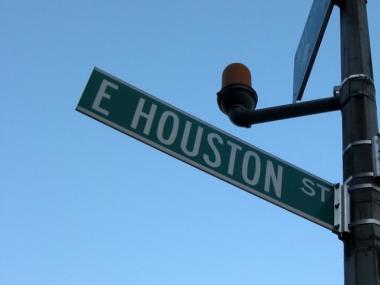The Lower East Side — an iconic piece of real estate that is the quintessential melting pot of America. Countless dreams came to fruition on the Lower East Side. Sons and daughters from lands afar, sailed into bustling New York harbor carrying a few belongings, and aspirations of one day making their lives better. Native Americans, Brits, Irish, Italians, Germans, Chinese, Hispanics, punks, and yes even hipsters have torn down and reconstructed this gateway of New York City. But who were the men, women and locations that made the Lower East Side what it is today and what is left of yesterday?
One of the major thoroughfares of the Lower East Side is Houston Street. Stretching from “river to river,” Houston Street serves as a boundary for many of the distinct neighborhoods in Lower Manhattan. Instead of focusing on the features of this street, I would like to pay homage to its namesake.
So just who is Houston Street named after? Scores of transplants from Minnesota will query, “Where is that organic, gluten free, market on HYOO-STEN Street?” (think Houston, Texas) instead of “Where is that pastrami place on HOW-STEN Street”? Poor William Houstoun has been dead since 1813, and we still can’t pronounce this patriot’s name correctly.

William Houstoun, of Scottish ancestry, was born circa 1755 in Savannah, Georgia then a province of the British Empire. He studied law in London and was accepted into the Honorable Society of the Inner Temple. Returning home due to the American Revolution, he served as Georgia’s delegate at the 1783 Continental Congress and for a short time at the 1787 Constitutional Convention. Throughout this time, Houstoun developed into a strong advocate for colonist’s rights even while most of his family would continue to support The British Crown. On January 2, 1788 Houstoun’s Georgia would become the fourth state admitted to the new Union.
While his life in politics proved somewhat uneventful, he did find some success in marriage. Houstoun would go onto marry Mary Bayard who was also of Scottish descent. The Bayard’s were an extremely prominent family in New York who can trace their lineage back to the Director-General himself, Peter Stuyvesant. Mary Bayard’s father, Nicholas, owned a sprawling farm encompassing 200 acres in present day Soho. This land was later split up due to financial difficulties, sold off, and developed into streets. Mr. Bayard would throw William a bone by naming one of these streets after his son in law, albeit with an alternate spelling, of Houston Street for reasons lost in time.
William Houstoun would pass away in Savannah, Georgia on March 17, 1813, seven years after his wife Mary. Today one can visit William at his resting place at St. Paul’s Chapel at 209 Broadway, and apologize for the potholes on the street that bears his name.

Michael is a New York City history buff, amateur genealogist, and a member of the New York law enforcement community. His NYC roots go back to 1820 on Water Street and the Vinegar Hill section in Brooklyn.
